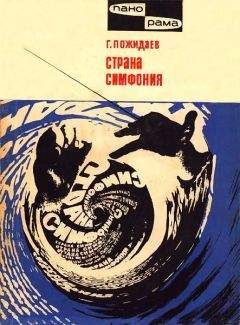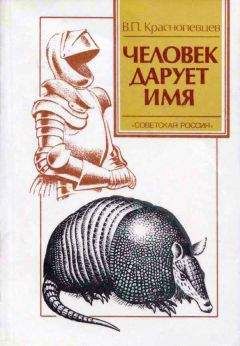Кристофер Фрит - ШИЗОФРЕНИЯ: краткое введение

Скачивание начинается... Если скачивание не началось автоматически, пожалуйста нажмите на эту ссылку.
Жалоба
Напишите нам, и мы в срочном порядке примем меры.
Описание книги "ШИЗОФРЕНИЯ: краткое введение"
Описание и краткое содержание "ШИЗОФРЕНИЯ: краткое введение" читать бесплатно онлайн.
Шизофрения — часто встречающееся психическое заболевание — портит жизнь одному из ста человек, оказывает разрушительное действие на тех, кто ею страдает, и на их семьи. Эта книга рассказывает, как реально выглядит болезнь, как прогрессирует и как ее можно лечить. Авторы книги суммировали данные самых последних исследований биологических основ шизофрении.
Imaging dopamine receptors: M. Laruelle, «Imaging dopamine transmission in schizophrenia. A review and meta-analysis». Quarterly Journal of Nuclear Medicine (1998), 42: 211-21.
Глава 5
Neuropathology of schizophrenia: Paul J. Harrison, «The neuropathology of schizophrenia: A critical review of the data and their interpretation». Brain (1999), 122: 593-62.
Genetics of schizophrenia: 1.1. Gottesman, Scnizophrenia Genesis: The Origins of Madness (W. H. Freeman & Co, 1991).
Adoption studies: S. S. Kety et at., «Mental illness in the biological and adoptive families of adopted individuals who have become schizophrenic: a preliminary report based on psychiatric interviews», Proceedings of the Annual Meeting of the American Psychopathology Association (1975), 63: 147-65.
Genetic linkage studies: K. S. Kendler, «The feasibility of linkage studies in schizophrenia», in Biological Perspectives of Schizophrenia, ed. H. Helmchan and F. A. Henn (Wylie, 1987).
Susceptibility genes in schizophrenia: C. R. Cloninger, «The discovery of susceptibility genes for mental disorders». Proceedings of the National Academy of Sciences, USA (2002), 99: 13365-7.
Velo-cardio facial syndrome: К. C. Murphy and M. J. Owen, «Velocardio facial syndrome. A model for understanding the genetics and pathogenesis of schizophrenia», British Journal of Psychiatry (2001), 179: 397–402.
Enlarged ventricles in schizophrenia: S. Lewis, «Structural brain imaging in biological psychiatry», British Medical Bulletin (1996), 52: 465-73; S. M. Lawrie and S. S. Abukmeil «Brain abnormality in schizophrenia. A systematic and quantitative review of volumetric magnetic resonance imaging studies», British Journal of Psychiatry (1998), 172: 110-20.
Gliosis in schizophrenia: G. W. Roberts et al., «Is there gliosis in schizophrenia? Investigation of the temporal lobe». Biological Psychiatry (1987), 22: 1459-68.
Brain changes prior to onset of schizophrenia: S. M. Lawrie et al., «Brain structure, genetic liability, and psychotic symptoms in subjects at high risk of developing schizophrenia». Biological Psychiatry (2001), 15: 811-23.
Functional brain imaging in schizophrenia: S. M. Lawrie, «Neuropathology and brain imaging in schizophrenia», in Schizophrenia: Concepts and Clinical Management ed. E. G. Johnstone, M. Humphries, F. Lang, S. M. Lawrie, and R. Sandier (Cambridge University Press, 1999), pp. 70-128.
Brain connectivity: K. J. Friston, «Dysfunctional connectivity in schizophrenia». World Psychiatry (2002), 1: 66–71.
Глава 6
Psychodynamic theories of schizophrenia: P. J. McKenna, Schizophrenia and Related Syndromes (Psychology Press, 1997).
Social stress as a cause of schizophrenia: G. W. Brown and J. L. Birley, «Crises and life changes and the onset of schizophrenia», Journal of Health and Social Behaviour (1968), 9: 203-14; M. Malzacher, J. Merz, and D. Ebnother, «Marked life events prior to an acute schizophrenic episode. Comparison of a sample of first admissions with a normal sample», tr. by authors, Archivfur Psychiatric und Nervenkrankheiten (1981), 230: 227-42.
Family relationships as a cause of schizophrenia: L. Wynne and M. Singer, «Thought disorder and family relations of schizophrenics. I. A research strategy. II. A classification of forms of thinking», Arhives of General Psychiatry (1963), 9: 191–206; S. Hirsch and J. P. Leff. «Abnormalities in the parents of schizophrenics» (Maudsley Monograph No. 22, Oxford University Press, 1975).
Institutionalization and schizophrenia: D. G. Cunningham Owens and E. C. Johnstone, «The disabilities of chronic schizophrenia — their nature and the factors contributing to their development», British Journal of Psychiatry (1980), 136: 384-95; D. A. Curson, C. Pantellis, J. Ward, and T. R. E. Barnes, «Institutionalisatism and schizophrenia, 30 years on», British Journal of Psychiatry (1992), 160: 230-41.
Gender differences in schizophrenia: H. Hafner et al., «Generating and testing a causal explanation of the gender difference in age at first onset of schizophrenia». Psychological Medicine (1993), 23: 925-40.
Season of birth and schizophrenia: T. N. Bradbury and G. A. Miller, «Season of birth in schizophrenia: a review of evidence, methodology, and etiology», Psychological Bulletin (1985), 98: 569-94.
Maternal flu and schizophrenia: E. O'Callaghan et al., «Schizophrenia after prenatal exposure to 1957 A2 influenza epidemic», Lancet (1991), 337: 1248-50; R. E. Kendell and I. W. Kemp, «Maternal influenza in the etiology of schizophrenia». Archives of General Psychiatry (1989), 46: 878-82.
Famine and schizophrenia: E. S. Susser and S. P. Lin, «Schizophrenia after prenatal exposure to the Dutch Hunger Winter of 1944–1945», Archives of General Psychiatry (1992), 49: 983-8.
Birth complications and schizophrenia: J. R. Geddes and S. M. Lawrie, «Obstetric complications and schizophrenia: a meta-analysis», British Journal of Psychiatry (1995), 167: 786-93.
Глава 7
The abyss of understanding: K. Jaspers, General Psychopathology (Manchester University Press, 1962).
Hallucinations as subvocal speech: L. N. Gould, «Auditory hallucinations and subvocal speech». Journal of Nervous and Mental Disease (1949), 109: 418-27; P. Green and M. Preston, «Reinforcement of vocal correlates of auditory hallucinations by auditory feedback: a case study», British Journal of Psychiatry (1981), 139: 204-8.
Inner speech: A. D. Baddeley and G. J. Hitch, Working Memory. The Psychology of Learning and Motivation: Advances in Research and Theory (G. H. Bower Academic Press, 1974), pp. 47–90.
Articulation as a treatment for auditory hallucinations: H. E. Nelson, S. Thrasher, and T. R. Barnes, «Practical ways to alleviate auditory hallucinations», British Medical Journal (1991), 302: 327.
Hallucinations and inner speech: C. L. Evans, P. K. McGuire, and A. S. David, «Is auditory imagery defective in patients with auditory hallucinations?». Psychological Medicine (2000), 30(1): 137-48.
Brain activity and inner speech: P. K. McGuire et al., «Functional anatomy of inner speech and auditory verbal imagery». Psychological Medicine (1996), 26: 29–38; D. A. Silbersweig et al., «Afunctional neuroanatomy of hallucinations in schizophrenia». Nature (1995), 378: 176-9; S. S. Shergill et al., «Mapping auditory hallucinations in schizophrenia using functional magnetic resonance imaging». Archives of «GeneralPsychiatry (2000), 57(11): 1033-8.
The concept of corollary discharge: H. von Helmholtz, Handbuch der Physiologischen Optik (Leipzig, Voss, 1866).
Self-monitoring and schizophrenia: I. Feinberg, „Efference copy and corollary discharge: implications for thinking and its disorders“, fSchizophrenia Bulletin (1978;, 4: 636-40; C. D. Frith, „The positive and negative symptoms of schizophrenia reflect impairments in the perception and initiation of action“. Psychological Medicine (1987), 17(3): 631-48; R. P. Bentall G. A. Baker, and S. Havers, „Reality monitoring and psychotic hallucinations“, British Journal of Clinical Psychology (1991), 30: 213-22.
Self-monitoring and motor control: P. Haggard, C. Newman, and E. Magno, „On the perceived time of voluntary actions“, British Journal of Psychology (1999), 90: 291–303; C. D. Frith and D. J. Done, „Experiences of alien control in schizophrenia reflect a disorder in the central monitoring of action“. Psychological Medicine (1989), 19(2): IV) 63.
Imagining movements and schizophrenia: P. Maruff, P. Wilson, and J Currie, „Abnormalities of motor imagery associated with somatic passivity phenomena in schizophrenia“. Schizophrenia Research (in press).
Tickling and schizophrenia: S.-J. Blakemore et al., „The perception ot self-produced sensory stimuli in patients with auditory hallucinations and passivity experiences: evidence for a breakdown in self-monitoring“. Psychological Medicine (2000), 30: 1131-9.
Brain activity and self-generated sensations: S. A. Spence et al., „А PET study of voluntary movement in schizophrenic patients experiencing passivity phenomena (delusions ot alien control)“. Brain (1997), 120: 1997–2011; J. M. Ford et al., „Cortical responsiveness during talking and listening in schizophrenia: An event-related brain potential study“. Biological Psychiatry (2001), 50(7): 540-9.
The disconnection hypothesis: S. M. Lawrie et al., „Reduced frontotemporal functional connectivity in schizophrenia associated with auditory hallucinations“. Biological Psychiatry (2002), 51(12): 1008-11; J. M. Ford et al., „Reduced communication between frontal and temporal lobes during talking in schizophrenia“. Biological Psychiatry (2002), 51(6): 485-92; K. J. Friston, „Dysfunctional connectivity in schizophrenia“. World Psychiatry (2002), 1: 66–71.
The anarchic hand: C. Marchetti and S. Delia Salla, „Disentangling the alien and anarchic hand“. Cognitive Neuropsychiatry (1998), 3: 191–208.
Other minds: R. Corcoran, G. Mercer, and C. D. Frith, „Schizophrenia, symptomatology and social inference: Investigating „theory of mind“ in people with schizophrenia“. Schizophrenia Research (1995), 17: 5-13.
Capgras syndrome: G. Blount, „Dangerousness of patients with Capgras syndrome“, Nebraska Medical Journal (1986), 71: 207; H. D. Ellis and A. W. Young, „Accounting for delusional misidentifications“, British Journal of Psychiatry (1990), 157: 239-48.
Weird experiences are not enough: C. Cahill, D. Silbersweig, and С, D. Frith, „Psychotic experiences induced in deluded patients using distorted auditory feedback“. Cognitive Neuropsychiatiy (1996), 1: 201-11.
Efficacy of drug treatment: J. M. Davis and D. L. Gerver, „Neuroleptics-clinical use in psychiatry“, in Handbook of Psychopharmacology. Neuroleptics and Schizophrenia, ed. L. L. Iversen and S. D. Iversen (Plenum Press, 1978).
Efficacy of psychological therapies: S. Pilling et al., „Psychological treatments in schizophrenia: I. Meta-analysis of family intervention and cognitive behaviour therapy“. Psychological Medicine (2002), 32(5): 763-82; S. Pilling et al., „Psychological treatments in schizophrenia: II. Meta-analyses of randomized controlled trials of social skills training and cognitive remediation“. Psychological Medicine (2002), 32(5): 783-91.
Cognitive therapy for hallucinations: P. D. J. Chadwick and M. J. Birchwood, „Challenging the omnipotence of voices: a cognitive approach to auditory hallucinations“, British Journal of Psychiatry (1494), 164:190–201.
Глава 8
L. Percy King, „Criminal complaints with probable causes (a true account)“, in The Inner World of Mental IIlness, ed. Bert Kaplan (Harper & Row, 1964).
The immunity principle: S. Gallagher, „Self-reference and schizophrenia: a cognitive model of immunity to error through misidentification“, in Exploring the Self, ed. D. Zahavi (John Benjamins, 2000).
Hallucinations caused by direct brain stimulation: H. W. Lee et al., „Mapping of functional organization in human visual cortex — Electrical cortical stimulation“. Neurology (2000), 54: 849-54.
Rational justifications for delusions: A. Baddeley et al., „Schizophrenic delusions and the construction of autobiographical memory“, in Remembering Our Past: Studies in Autobiographical Memory, ed. D. C. Rubin (Cambridge University Press, 1996), pp. 384–428.
Folie a deux: R. Mentjox, C. A. van Houten, and C. G. Kooiman, „Induced psychotic disorder: clinical aspects, theoretical considerations, and some guidelines for treatment“. Comprehensive Psychiatry (1993), 34: 120-6.
Violence and mental illness on television: G. Gerbner, L. Gross, M. Morgan, and N. Signorielli, „Health and medicine on television“. The New England Journal of Medicine (1981), 305: 901-4.
Violence and schizophrenia: E. Walsh, A. Buchanan, and T. Fahy, Violence and schizophrenia: examining the evidence», British Journal of Psychiatry (2002), 180: 490-5.
Predicting violence in schizophrenia: S. S. Shtrgill and G. Szmukler, «How predictable is violence and suicide in community psychiatry practice?». Journal of Mental Health (1998), 7: 383–401.
Inquiries into failures of community care: Louis Blom-Cooper, «The falling shadow: one patient's mental health care 1978–1993», report of the Committee of Inquiry into the events leading up to and surrounding the fatal incident at the Edith Morgan Centre, Torbay, on 1 September 1993 (Duckworth, 1995).
Drug treatment and psychological treatment have the same effect on the brain: L. R. Baxter et al., «Caudate glucose metabolic-rate changes with both drug and behavior-therapy for obsessive-compulsive disorder». Archives of General Psychiatry (1992), 49: 681-9.
Brain activity during acts of will: C. D. Frith et al., «Willed action and the prefrontal cortex in man». Proceedings of the Royal Society of London (1991), B: 241-6; B. Libet et al., «Time of conscious intention to act in relation to onset of cerebral activity (readiness-potential). The unconscious initiation of a freely voluntary act». Brain (1983), 106: 623-42.
Литература
Александровский Ю. А. Пограничные психические расстройства. М.: Медицина, 2000.
Александровский Ю. А. Психические расстройства в общемедицинской практике и их лечение. М.: ГЭОТАР-Мед, 2004.
Антонян Ю. М., Бородин С. В. Преступное поведение и психические аномалии. М.: Спарк, 1998.
Подписывайтесь на наши страницы в социальных сетях.
Будьте в курсе последних книжных новинок, комментируйте, обсуждайте. Мы ждём Вас!
Похожие книги на "ШИЗОФРЕНИЯ: краткое введение"
Книги похожие на "ШИЗОФРЕНИЯ: краткое введение" читать онлайн или скачать бесплатно полные версии.
Мы рекомендуем Вам зарегистрироваться либо войти на сайт под своим именем.
Отзывы о "Кристофер Фрит - ШИЗОФРЕНИЯ: краткое введение"
Отзывы читателей о книге "ШИЗОФРЕНИЯ: краткое введение", комментарии и мнения людей о произведении.



























